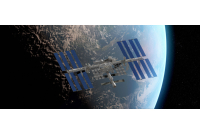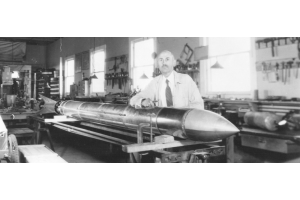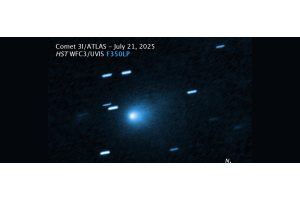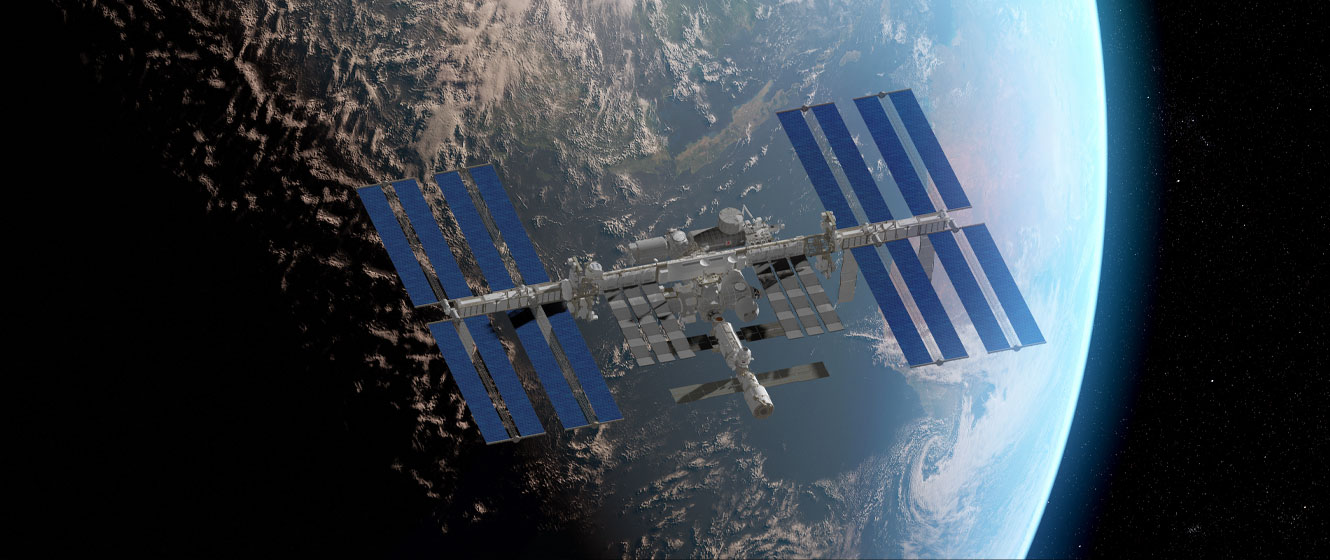
Trying to spot the International Space Station? You’re in luck. The International Space Station (ISS) is the third brightest object in the night sky, next to the Moon and Venus. At its very brightest, the ISS shines at a magnitude of -3. That’s brighter than all the planets in the solar system, except for Venus. This is because the International Space Station is massive, spanning the size of a football stadium!
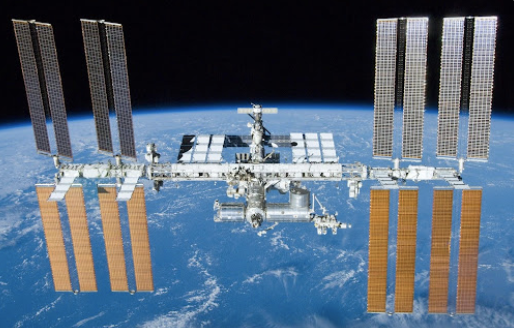
Additionally, the International Space Station passes over 90% of the Earth’s population. Those located anywhere between 51.6 degrees North and 51.6 degrees South also have the ability to see the ISS straight on for the best possible viewing. Those who live outside of this region of the Earth still have the ability to see the ISS, but not straight overhead.
The ISS orbits at an altitude of about 250 miles above the Earth, traveling at a speed of 17,500 miles per hour. At this speed, the ISS takes only 90 minutes to complete a single orbit around the Earth. It will appear a very bright white, fading into orange and finally disappearing as it crosses over the Earth’s shadow. The average pass of the ISS takes about 3-4 minutes, with the very best taking just 5 minutes.
The ISS began construction in 1998 and finished in the year 2011 with the retirement of the Space Shuttle. The construction of the ISS represents the most challenging, complex, and expensive international cooperation in space.
Finding the ISS is easy, but you need to be prepared. There are several smartphone apps that will notify you when the International Space Station is about to fly over. There’s the ISS Spotter App, with nearly a 5-star rating and zero ads. This app will alert you when the ISS will be visible from your location, as well as where to look. Depending on where you’re located, the ISS will either come from the northeast or southwest and trek across the sky.
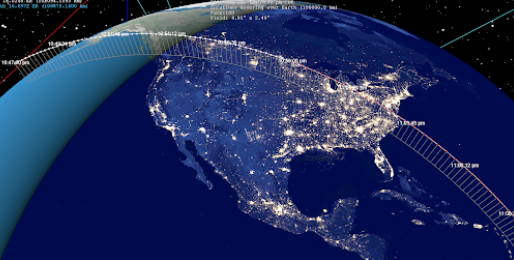
Those using other devices may look into the ISS Detector Satellite Tracker, which sets an alarm a few minutes before a pass. You will see a bright white star crossing the sky. You might think you’re looking at a plane, but its lack of navigational lights and fast motion across the sky will be how you know otherwise.
You can also photograph the ISS. This can be done in many ways. One method is to simply take a “streak” shot of the ISS as it passes overhead. This can be done with a DSLR or iPhone (with a long-exposure app). Simply point your camera up, make sure it’s in focus, and take a shot! A wide aperture, exposure of at least 10 seconds, and low ISO should be good settings for your DSLR.
Many astrophotographers prefer a Dobsonian telescope to photograph the International Space Station. This is because the space station moves incredibly fast, well over 17,500mph! As a result, most tracking mounts are unable to track the space station as it flies by overhead. Dobsonians, on the other hand, can be fast enough to keep up if you track it by hand. To do this, you’ll need as much magnification as possible and a very steady hand. Be sure to use a 2-3x Barlow lens and a DSLR camera, if you have one. The method of tracking the ISS is similar to photographing the planets.
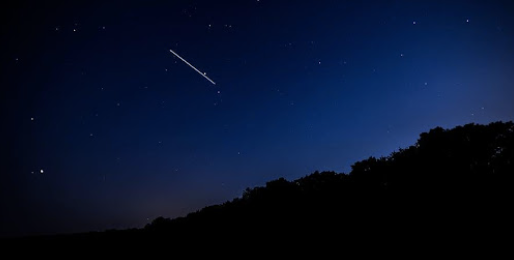
When tracking the station, keep your telescope ahead of the station by 1-2 seconds, and then take as many quick exposures as possible, adjusting when necessary as the ISS goes by. Most of your images will be a miss, but if you’re lucky you should find that a few of your frames have the space station in them! You will be able to clearly see the solar panels and some other details on the space station. The Apertura AD8 telescope is a great Dobsonian to use when tracking the ISS. Its 8” of aperture will be more than enough to glimpse a view of the ISS!

Learn More
Interested in learning more about what's in the sky above us? Not sure where to begin? Check out our Astronomy Hub to learn more!
This Article was Last Updated on 07/25/2023





